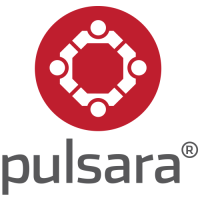As EMS works to build a stronger partnership with receiving emergency departments, one of the key challenges is ensuring effective communication, especially prior to arrival. Ineffective communication can lead to the following three harms:
- Delayed ED staff response.
- Inefficient resource allocation in the ED.
- Inadequate resource readiness when needed.
Fortunately, new tools are now available to help EMS providers improve communications and ensure the right resources are available for the right patient in the right amount of time.
Alerts prompt hospital response
In an age where you can order a pizza, see when it is being made and track its delivery to your house, it makes little sense that for many hospital systems, critical trauma, cardiac, stroke and sepsis alerts work through an elaborate system of radio reports, faxes, emails and paging systems.
Fortunately, when it comes to critical patient alerts, there’s an app for that – several, in fact. With the push of a button, EMS providers in many regions can now alert hospitals to prepare resources for the arrival of critical patients, while at the same time delivering HIPAA-compliant patient information and data directly to the trauma, cardiac, stroke and sepsis clinical specialists in an instant.
Effective alerts help ensure that the right ED resources are ready for your patient before they arrive.
Telemedicine consultation aids care and transport decisions
Even when you can alert them efficiently, in some cases it will still make more sense to bring the clinical specialist into the back of the ambulance to begin evaluating the patient, rather than waiting for them to arrive at the hospital.
Telemedicine allows an ED or other specialist physician to directly communicate with EMS providers and observe a patient wherever they are. This not only makes expert physician consultation available in critical situations to EMS providers far from specialty hospitals, it also can aid EMS providers in delivering primary care on-scene.
Telemedicine can help ensure that patients in need of specialty care are transported to facilities where specialty teams await their arrival. At the same time, telemedicine can help avoid ED overcrowding by bringing patients with lower acuity illness and injuries to less busy hospitals or, in many cases, solving the problem on-scene and avoiding transport altogether.
Effective telemedicine helps make sure that the right patient gets to the right resources as soon as possible, even if that means prior to, or instead of, transporting to the hospital.
Cloud sharing of data keeps providers informed
Under cooperative agreement from the Office of the National Coordinator for Health Information Technology (ONC), the California EMS Authority developed a model of integrating EMS health information exchange organizations called SAFR for:
- Information Search,
- Hospital Alert,
- Filing records, and
- Reconciling patient information.
Exchange of patient health information is now being used in varying degrees using different software systems in Denver; Indianapolis; Oklahoma; and Rochester, N.Y.
Benefits to cloud information sharing of patient data include the ability to access verified medical information even when patients, their families and caregivers cannot provide it, and providing not only alerts, but also critical patient information to hospitals prior to arrival, facilitating transitions of care.
Including EMS patient encounter information in the overall patient health records provides a better overview of the patient’s situation for all providers.
Finally, reconciling patient diagnosis, disposition and billing information improves EMS quality assurance, proper public health investments and revenue recovery to help fund these new health information services.
Effective integration of EMS directly with hospitals, or through state and local health information exchanges, can improve both EMS and hospital access to critical patient information, while at the same time making patient care documentation more efficient and useful across the entire continuum of patient care.




